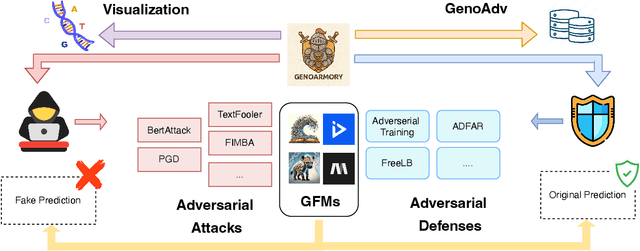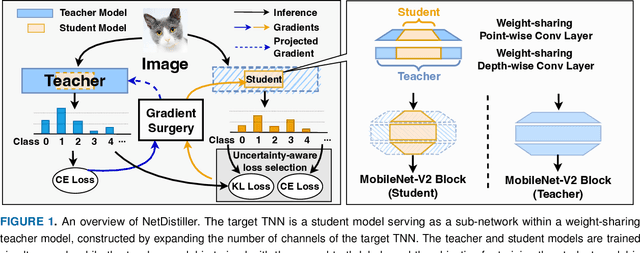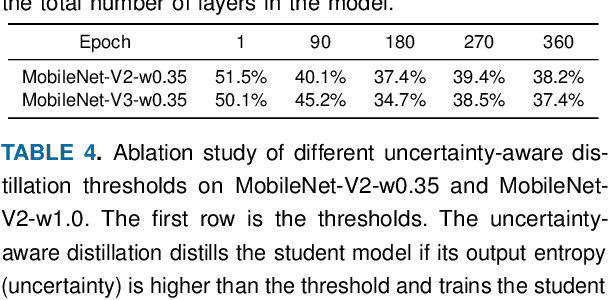Shang Wu
Katie
A Theoretical Analysis of Discrete Flow Matching Generative Models
Sep 26, 2025Abstract:We provide a theoretical analysis for end-to-end training Discrete Flow Matching (DFM) generative models. DFM is a promising discrete generative modeling framework that learns the underlying generative dynamics by training a neural network to approximate the transformative velocity field. Our analysis establishes a clear chain of guarantees by decomposing the final distribution estimation error. We first prove that the total variation distance between the generated and target distributions is controlled by the risk of the learned velocity field. We then bound this risk by analyzing its two primary sources: (i) Approximation Error, where we quantify the capacity of the Transformer architecture to represent the true velocity, and (ii) Estimation Error, where we derive statistical convergence rates that bound the error from training on a finite dataset. By composing these results, we provide the first formal proof that the distribution generated by a trained DFM model provably converges to the true data distribution as the training set size increases.
HDLxGraph: Bridging Large Language Models and HDL Repositories via HDL Graph Databases
May 21, 2025Abstract:Large Language Models (LLMs) have demonstrated their potential in hardware design tasks, such as Hardware Description Language (HDL) generation and debugging. Yet, their performance in real-world, repository-level HDL projects with thousands or even tens of thousands of code lines is hindered. To this end, we propose HDLxGraph, a novel framework that integrates Graph Retrieval Augmented Generation (Graph RAG) with LLMs, introducing HDL-specific graph representations by incorporating Abstract Syntax Trees (ASTs) and Data Flow Graphs (DFGs) to capture both code graph view and hardware graph view. HDLxGraph utilizes a dual-retrieval mechanism that not only mitigates the limited recall issues inherent in similarity-based semantic retrieval by incorporating structural information, but also enhances its extensibility to various real-world tasks by a task-specific retrieval finetuning. Additionally, to address the lack of comprehensive HDL search benchmarks, we introduce HDLSearch, a multi-granularity evaluation dataset derived from real-world repository-level projects. Experimental results demonstrate that HDLxGraph significantly improves average search accuracy, debugging efficiency and completion quality by 12.04%, 12.22% and 5.04% compared to similarity-based RAG, respectively. The code of HDLxGraph and collected HDLSearch benchmark are available at https://github.com/Nick-Zheng-Q/HDLxGraph.
GenoArmory: A Unified Evaluation Framework for Adversarial Attacks on Genomic Foundation Models
May 16, 2025



Abstract:We propose the first unified adversarial attack benchmark for Genomic Foundation Models (GFMs), named GenoArmory. Unlike existing GFM benchmarks, GenoArmory offers the first comprehensive evaluation framework to systematically assess the vulnerability of GFMs to adversarial attacks. Methodologically, we evaluate the adversarial robustness of five state-of-the-art GFMs using four widely adopted attack algorithms and three defense strategies. Importantly, our benchmark provides an accessible and comprehensive framework to analyze GFM vulnerabilities with respect to model architecture, quantization schemes, and training datasets. Additionally, we introduce GenoAdv, a new adversarial sample dataset designed to improve GFM safety. Empirically, classification models exhibit greater robustness to adversarial perturbations compared to generative models, highlighting the impact of task type on model vulnerability. Moreover, adversarial attacks frequently target biologically significant genomic regions, suggesting that these models effectively capture meaningful sequence features.
OmniSQL: Synthesizing High-quality Text-to-SQL Data at Scale
Mar 04, 2025Abstract:Text-to-SQL, the task of translating natural language questions into SQL queries, plays a crucial role in enabling non-experts to interact with databases. While recent advancements in large language models (LLMs) have significantly enhanced text-to-SQL performance, existing approaches face notable limitations in real-world text-to-SQL applications. Prompting-based methods often depend on closed-source LLMs, which are expensive, raise privacy concerns, and lack customization. Fine-tuning-based methods, on the other hand, suffer from poor generalizability due to the limited coverage of publicly available training data. To overcome these challenges, we propose a novel and scalable text-to-SQL data synthesis framework for automatically synthesizing large-scale, high-quality, and diverse datasets without extensive human intervention. Using this framework, we introduce SynSQL-2.5M, the first million-scale text-to-SQL dataset, containing 2.5 million samples spanning over 16,000 synthetic databases. Each sample includes a database, SQL query, natural language question, and chain-of-thought (CoT) solution. Leveraging SynSQL-2.5M, we develop OmniSQL, a powerful open-source text-to-SQL model available in three sizes: 7B, 14B, and 32B. Extensive evaluations across nine datasets demonstrate that OmniSQL achieves state-of-the-art performance, matching or surpassing leading closed-source and open-source LLMs, including GPT-4o and DeepSeek-V3, despite its smaller size. We release all code, datasets, and models to support further research.
Computational and Statistical Asymptotic Analysis of the JKO Scheme for Iterative Algorithms to update distributions
Jan 14, 2025Abstract:The seminal paper of Jordan, Kinderlehrer, and Otto introduced what is now widely known as the JKO scheme, an iterative algorithmic framework for computing distributions. This scheme can be interpreted as a Wasserstein gradient flow and has been successfully applied in machine learning contexts, such as deriving policy solutions in reinforcement learning. In this paper, we extend the JKO scheme to accommodate models with unknown parameters. Specifically, we develop statistical methods to estimate these parameters and adapt the JKO scheme to incorporate the estimated values. To analyze the adopted statistical JKO scheme, we establish an asymptotic theory via stochastic partial differential equations that describes its limiting dynamic behavior. Our framework allows both the sample size used in parameter estimation and the number of algorithmic iterations to go to infinity. This study offers a unified framework for joint computational and statistical asymptotic analysis of the statistical JKO scheme. On the computational side, we examine the scheme's dynamic behavior as the number of iterations increases, while on the statistical side, we investigate the large-sample behavior of the resulting distributions computed through the scheme. We conduct numerical simulations to evaluate the finite-sample performance of the proposed methods and validate the developed asymptotic theory.
CMoralEval: A Moral Evaluation Benchmark for Chinese Large Language Models
Aug 19, 2024



Abstract:What a large language model (LLM) would respond in ethically relevant context? In this paper, we curate a large benchmark CMoralEval for morality evaluation of Chinese LLMs. The data sources of CMoralEval are two-fold: 1) a Chinese TV program discussing Chinese moral norms with stories from the society and 2) a collection of Chinese moral anomies from various newspapers and academic papers on morality. With these sources, we aim to create a moral evaluation dataset characterized by diversity and authenticity. We develop a morality taxonomy and a set of fundamental moral principles that are not only rooted in traditional Chinese culture but also consistent with contemporary societal norms. To facilitate efficient construction and annotation of instances in CMoralEval, we establish a platform with AI-assisted instance generation to streamline the annotation process. These help us curate CMoralEval that encompasses both explicit moral scenarios (14,964 instances) and moral dilemma scenarios (15,424 instances), each with instances from different data sources. We conduct extensive experiments with CMoralEval to examine a variety of Chinese LLMs. Experiment results demonstrate that CMoralEval is a challenging benchmark for Chinese LLMs. The dataset is publicly available at \url{https://github.com/tjunlp-lab/CMoralEval}.
Planning with Large Language Models for Conversational Agents
Jul 04, 2024Abstract:Controllability and proactivity are crucial properties of autonomous conversational agents (CAs). Controllability requires the CAs to follow the standard operating procedures (SOPs), such as verifying identity before activating credit cards. Proactivity requires the CAs to guide the conversation towards the goal during user uncooperation, such as persuasive dialogue. Existing research cannot be unified with controllability, proactivity, and low manual annotation. To bridge this gap, we propose a new framework for planning-based conversational agents (PCA) powered by large language models (LLMs), which only requires humans to define tasks and goals for the LLMs. Before conversation, LLM plans the core and necessary SOP for dialogue offline. During the conversation, LLM plans the best action path online referring to the SOP, and generates responses to achieve process controllability. Subsequently, we propose a semi-automatic dialogue data creation framework and curate a high-quality dialogue dataset (PCA-D). Meanwhile, we develop multiple variants and evaluation metrics for PCA, e.g., planning with Monte Carlo Tree Search (PCA-M), which searches for the optimal dialogue action while satisfying SOP constraints and achieving the proactive of the dialogue. Experiment results show that LLMs finetuned on PCA-D can significantly improve the performance and generalize to unseen domains. PCA-M outperforms other CoT and ToT baselines in terms of conversation controllability, proactivity, task success rate, and overall logical coherence, and is applicable in industry dialogue scenarios. The dataset and codes are available at XXXX.
DRSI-Net: Dual-Residual Spatial Interaction Network for Multi-Person Pose Estimation
Feb 26, 2024



Abstract:Multi-person pose estimation (MPPE), which aims to locate keypoints for all persons in the frames, is an active research branch of computer vision. Variable human poses and complex scenes make MPPE dependent on both local details and global structures, and the absence of them may cause keypoint feature misalignment. In this case, high-order spatial interactions that can effectively link the local and global information of features are particularly important. However, most methods do not have spatial interactions, and a few methods have low-order spatial interactions but they are difficult to achieve a good balance between accuracy and complexity. To address the above problems, a Dual-Residual Spatial Interaction Network (DRSI-Net) for MPPE with high accuracy and low complexity is proposed in this paper. DRSI-Net recursively performs residual spatial information interactions on neighbor features, so that more useful spatial information can be retained and more similarities can be obtained between shallow and deep extracted features. The channel and spatial dual attention mechanism introduced in the multi-scale feature fusion also helps the network to adaptively focus on features relevant to target keypoints and further refine generated poses. At the same time, by optimizing interactive channel dimensions and dividing gradient flow, the spatial interaction module is designed to be lightweight, which reduces the complexity of the network. According to the experimental results on the COCO dataset, the proposed DRSI-Net outperforms other state-of-the-art methods in both accuracy and complexity.
NetDistiller: Empowering Tiny Deep Learning via In-Situ Distillation
Oct 24, 2023



Abstract:Boosting the task accuracy of tiny neural networks (TNNs) has become a fundamental challenge for enabling the deployments of TNNs on edge devices which are constrained by strict limitations in terms of memory, computation, bandwidth, and power supply. To this end, we propose a framework called NetDistiller to boost the achievable accuracy of TNNs by treating them as sub-networks of a weight-sharing teacher constructed by expanding the number of channels of the TNN. Specifically, the target TNN model is jointly trained with the weight-sharing teacher model via (1) gradient surgery to tackle the gradient conflicts between them and (2) uncertainty-aware distillation to mitigate the overfitting of the teacher model. Extensive experiments across diverse tasks validate NetDistiller's effectiveness in boosting TNNs' achievable accuracy over state-of-the-art methods. Our code is available at https://github.com/GATECH-EIC/NetDistiller.
NeRFool: Uncovering the Vulnerability of Generalizable Neural Radiance Fields against Adversarial Perturbations
Jun 10, 2023



Abstract:Generalizable Neural Radiance Fields (GNeRF) are one of the most promising real-world solutions for novel view synthesis, thanks to their cross-scene generalization capability and thus the possibility of instant rendering on new scenes. While adversarial robustness is essential for real-world applications, little study has been devoted to understanding its implication on GNeRF. We hypothesize that because GNeRF is implemented by conditioning on the source views from new scenes, which are often acquired from the Internet or third-party providers, there are potential new security concerns regarding its real-world applications. Meanwhile, existing understanding and solutions for neural networks' adversarial robustness may not be applicable to GNeRF, due to its 3D nature and uniquely diverse operations. To this end, we present NeRFool, which to the best of our knowledge is the first work that sets out to understand the adversarial robustness of GNeRF. Specifically, NeRFool unveils the vulnerability patterns and important insights regarding GNeRF's adversarial robustness. Built upon the above insights gained from NeRFool, we further develop NeRFool+, which integrates two techniques capable of effectively attacking GNeRF across a wide range of target views, and provide guidelines for defending against our proposed attacks. We believe that our NeRFool/NeRFool+ lays the initial foundation for future innovations in developing robust real-world GNeRF solutions. Our codes are available at: https://github.com/GATECH-EIC/NeRFool.
 Add to Chrome
Add to Chrome Add to Firefox
Add to Firefox Add to Edge
Add to Edge